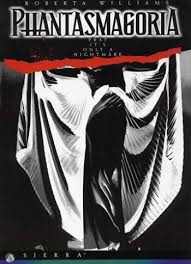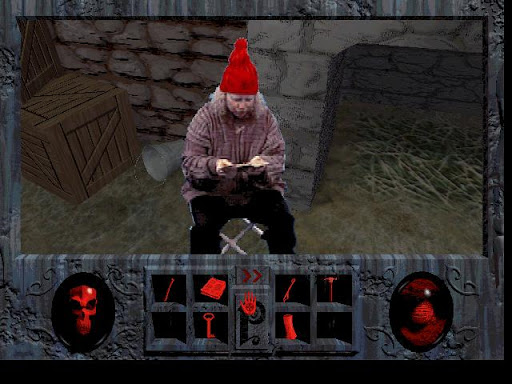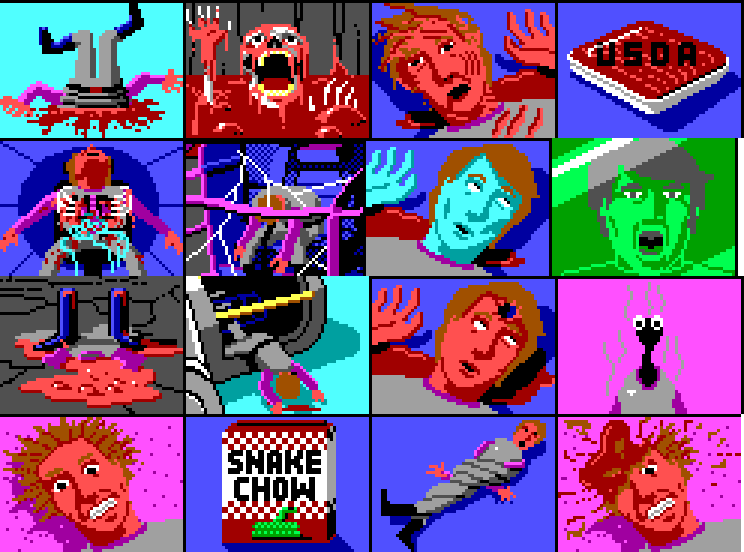RE:Play Phantasmagoria

“The history of horror is basically a history of what we aren’t all that frightened of anymore.
Horror began appropriately enough in France shortly after the Reign of the Terror. Religion was officially outlawed. The Catholic Church had been forced out of the country and if you were going to worship anything at all, it had to be the Goddess of Reason. Graveyards were filled with dead people who were according to the First Republic, gone forever. They were in an eternal sleep from which there would be no waking.
Into this government-mandated spiritual vacuum stepped Étienne-Gaspard Robert, the creator of the very first horror show: The Phantasmagoria.
The Phantasmagoria was a “Magic Lantern” show that combined sound effects and an eerie music score provided by Ben Franklin’s glass harmonica.
Robert, unlike his various conmen spiritualist predecessors had to keep an eye out for militantly atheist authorities, so he was very clear about the fact that what his audience was watching was fiction. It wasn’t real and it was purely for entertainment.
The Phantasmagoria was the world’s first horror film.
And by all accounts, audiences found it utterly terrifying. Admittedly Robert was careful to serve them punch laced with laudanum before the show started but that only goes so far.“
Phantasmagoria arrived when Sierra Entertainment was at something of a crossroads.
Doom stalked the land.
And by that, I mean that Doom-Clones had taken over PC gaming. Hexen, Heretic, Rise of the Triad and Dark Forces among others were at the top of the charts. And many, many others were in the pipeline.
By 1995 Sierra had dominated the computer gaming market for ten years but the market was now shifting and Sierra’s corporate knowledge didn’t really favor the new fashion in gaming. However, the house that Williams built was still the undisputed king of the adventure-puzzlers and if those could stay relevant then Sierra was still in business. And truthfully in 1995 that seemed quite possible.
You see, two years before a game called Seventh Guest had rewritten the rules on the adventure-puzzle genre. Trilobyte had gambled big time on their game being the first (I think) to use live actors in their adventure puzzle game instead of computer animation. It was also the first to require the use of a CD-ROM drive to play it.* And that was quite the high roll play because those weren’t really standard equipment yet in 1993. However, their wager paid off, Seventh Guest was enough of a must-play that it made gamers take the plunge and fork over a good chunk of change to Creative Labs to buy a CD-ROM.
For the benefit of my younger readers. In 1995 hard drive technology had hit a wall of about 500 megabytes (I misspelled that as gigabytes twice). ROM disks could get you a better than a gigabyte of data. This made the use of live actors a workable proposition.
Note my previous use of the word “workable.” I didn’t say anything about the use of live actors being a good idea.
There is no question that Seventh Guest made money, but the performances were terrible. It was worse than a community theater performance of Our Town. The actors weren’t good, to begin with and putting them in front of greenscreens proved massively distracting for them.
Not that that seemed to slow down the game’s sales. By 1995 it had sold 1.5 million copies.
It wasn’t a hard decision for Ken Williams to pursue this market. So, his wife Roberta set about making Sierra’s first horror game with live actors.
I remember the thrill of anticipation when I first loaded this one up back in 1996, (yeah, I had to buy a new computer). While it was loading, I felt that building tension you get when you are on the first uphill climb of a rollercoaster. You know it’s going to be scary, but you also know you will be safe.
And then the game started and that first rise over the top of the roller coaster revealed miles of flat, level straight tracks.
The opening scene was cheesy even by mid-Nineties standards. The first thing you see is a guy with a ponytail taking pictures of a small New England town. The first few buildings look real but then he takes a picture of an obviously CGI mansion. He zooms in, takes a couple of more snaps, and then the POV flies through the keyhole. We are then treated to a number of images swooping by that are supposed to inspire… Well, terror, I guess. Swords are stuffed into a basket while a woman screams. Snakes with human heads and other “bizarre” images. This was possibly a shout-out to the original Phantasmagoria during the Terror but I’m not sure. Finally, it settles on a blonde woman who is tied to a throne and is screaming. Then an ax bloodily splits her forehead. The same woman suddenly sits up in bed, panting in terror from what was obviously a nightmare.
But then JUMPSCARE her head is suddenly encased in bondage gear and stuff drills into it. She wakes up for real this time. She is in bed with the hairy photographer, who sloppily nuzzles her to (gag) comfort her. Then they have PG-13 sex with side-boob. Thus, fulfilling the “strong sexual content” promise the box made to us.
The plot is that Adrienne the novelist and Don her photographer husband have bought this fixer-upper of a cursed mansion.
It was owned by a Blue-beard, serial killer/Satanist named Zolton Carno.
Skipping ahead past the standard move your adventure-puzzle-character around and do boring normal things, Adrienne accidentally releases Carno’s cursed, demonic soul from a wooden box and Zolton promptly possesses Don.
Adrienne starts having visions of Carno killing his previous wives. These are unlocked by solving various Sierra puzzles. You meet several characters along the way like Harriet the Garden Gnome (not literally but)

Also, the actor who played Jaffar in Aladin. There are as usual many ways to get yourself killed. I almost said they were gorier than Sierra’s usual death scenes but then I thought better of it.

There is also an out-of-blue rape scene. Don and Adrienne were having fully clothed sex and then Don suddenly gets very rough with Adrienne. Which was breaking new and unwelcome ground for Sierra.
Finally, Adrienne is captured by Don and tied to the execution throne from her nightmare. However, she gets a hand free and kills her hairy, hairy husband with the mechanical head-splitting ax (also from her nightmare). She is awful broken up over it. Anyway, killing Don frees the demonic form of Carno, who comes after her and she traps him using a plot contrivance ritual.
The End.
Honestly, this is not one of my favorite Sierra games. I’m afraid a lot of that had to do with the quality of the performances. These weren’t the best actors working at the time. The actor who played Don was so over the top with his cackling that you couldn’t take him seriously. Victoria Morsell who played Adrienne was a Nineties Blockbuster Video Tweedlet who starred in softcore straight-to-video movies with words like Hot and Savage in the titles. The rest of the phoned-in performances looked like they were being delivered by people who had been rounded up at the local dinner theater but they accidently kidnapped the wait staff instead of the actors.
These kinds of games were filmed entirely against green screens and it’s pretty hard for a good actor to deliver under those circumstances let alone a mediocre one.** Given the technical limits of these live-action games there were frequent and p-r-o-l-o-n-g-e-d pauses while the CD-ROM groaned and growled at you as it did its thing. The puzzles were a requirement for any Sierra game but they also served to take you out of the moment. All of these things taken together meant that it was impossible for the story’s atmosphere to develop. It was a horror game that was never scary at all.
Phantasmagoria had a budget of eight hundred thousand dollars but ended up costing four million. Which was a harbinger of things to come. However, it did rake in twelve million in sales. In the short term, it was a success.
But in the long term. I think live actor ROM era games did more to damage the adventure-puzzle genre than the arrival of the FPS gaming.
Simply put, the charm of Gabriel Knight and Quest for Glory was gone.
*Or at least it’s the first one I can remember.
**This is Christopher (believe it or not) Walken’s performance from 1996 game Ripper.

